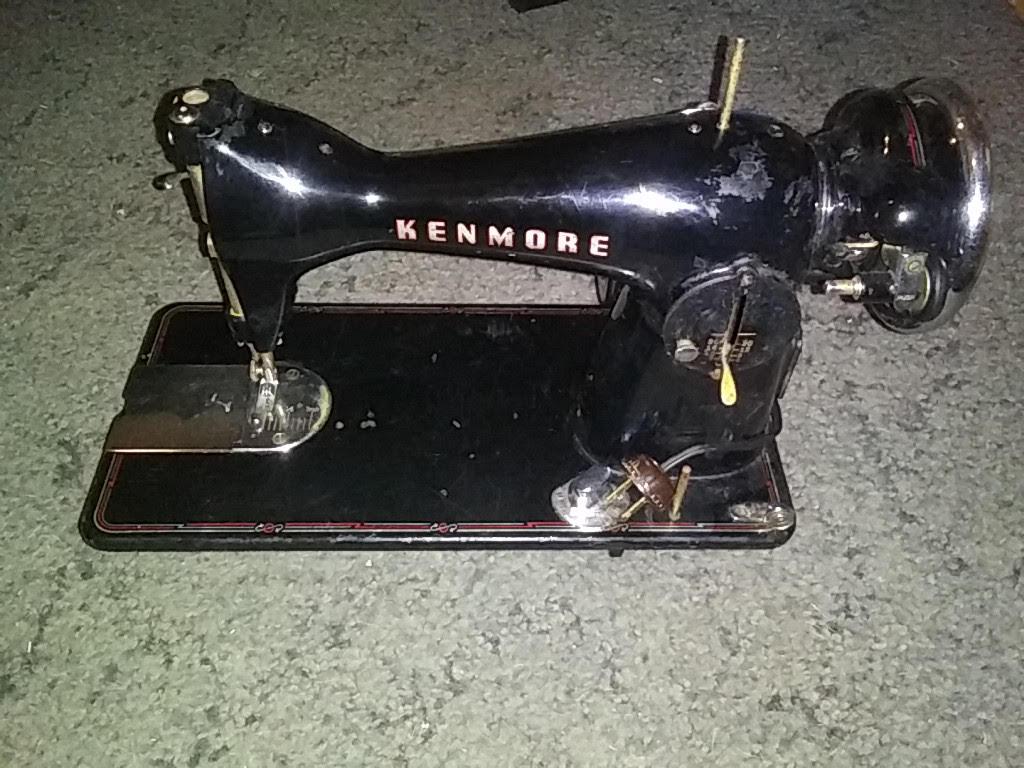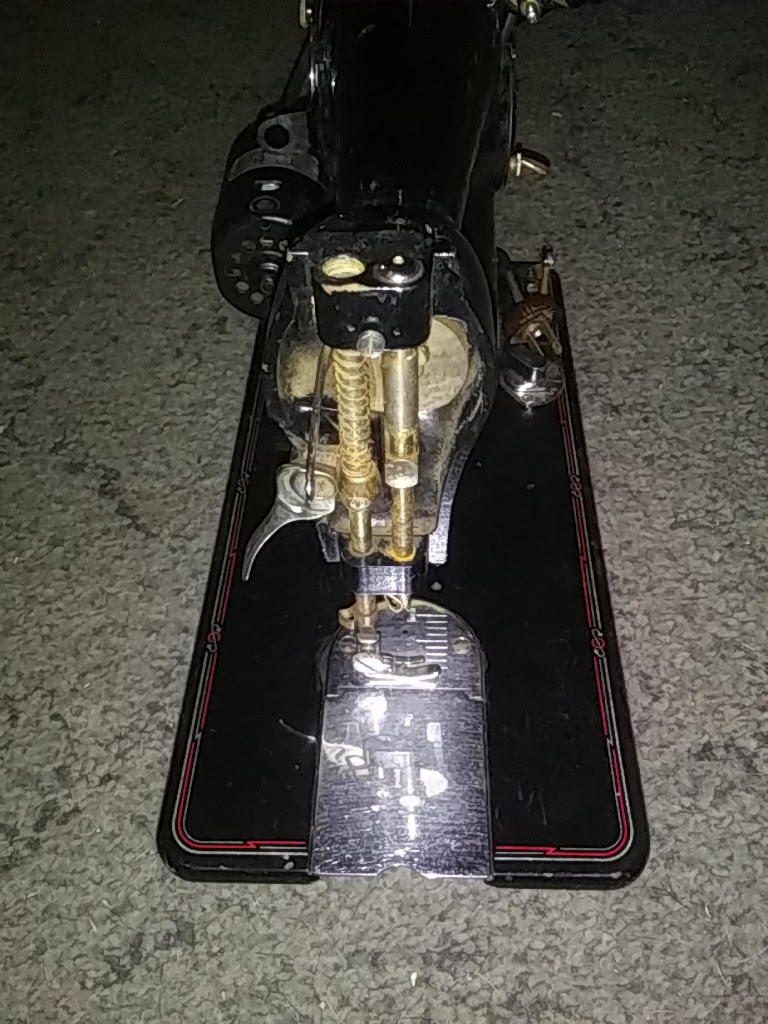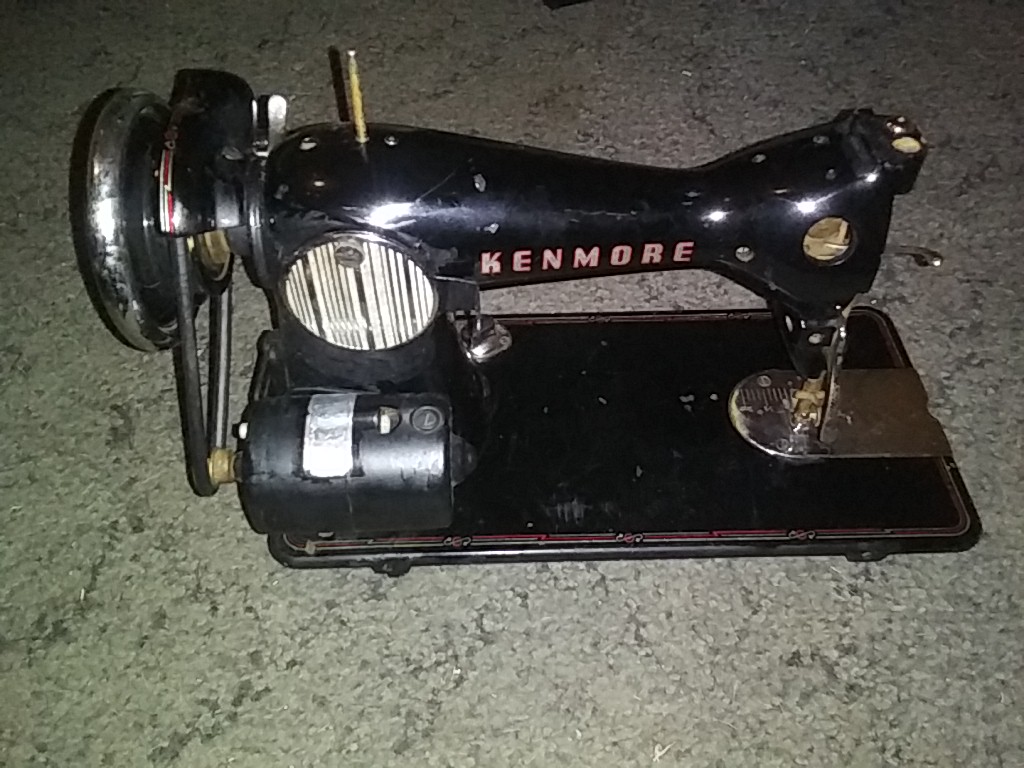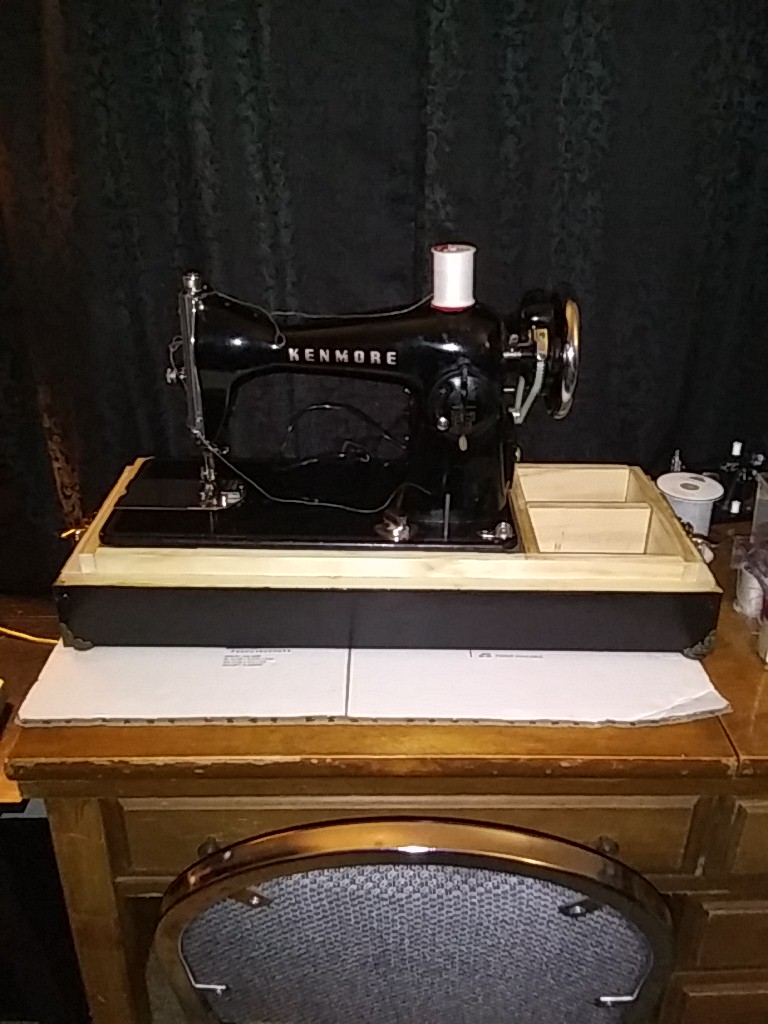
After obtaining the Mercury "Model 103," I then set my sights on a Kenmore 148.274 that I had passed over for the longest time due to my prior belief that the machine was "too old" and "too primitive" to be of use to me.
However, in performing research for the Mercury and actually sewing on it, I gained an extreme appreciation for the stitch quality produced by this family of straight-stitch sewing machines. It was also motivating that parts for the Kenmore 148.274 would be easy to find due it being so closely matched to the Singer Class 15 sewing machine.

Like the previous machines, the Kenmore 148.274 was one that I purchased from a seller on the Facebook Marketplace. From the pictures displayed, the machine looked to be mostly there although it turned out to be a good thing that I had talked the seller down on price as I found that the machine was not only frozen, but was also missing various components.

My first order of business for this Kenmore 148.274 sewing machine was to get it unfrozen which I accomplished by giving its innards a healthy dose of "PB Blaster" while being mindful of the painted surfaces. After the first round of PB Blaster, I was able to get the machine to rotate just slightly in both directions. At that point, I followed up with another round of PB Blaster which I then allowed to sit for a while before attempting to rotate the machine in either direction again. After a while of cycling through lubricating and rotating the hand-wheel until I was able to get the machine to complete a full rotation without getting stuck. Once that was accomplished, I then began using sewing machine oil to coax the machine into smoother rotations.

With the machine able to move through a full rotation, I then turned my attention towards securing the machine's missing parts with the first being a needle clamp followed by a bobbin case. Shortly thereafter, I was able to secure a face plate and pressure regulator. The final parts I secured to make the machine operational was a sewing machine motor, pedal and light assembly.

Having everything I needed to make the machine operational, my focus then turned to building a portable case for it. After all, I had become accustom to sewing machines either being in a case or cabinet for use. This was probably the most time consuming part as I grossly underestimated how much wood would be needed as I originally only measured with the intention of making a display case before finally deciding to convert that to a case with a cover.

Finally once I had restored my Kenmore 148.274 to a point where I felt comfortable sewing a garment on it, I found that it not only performed very well despite its age, but it also produced very beautiful stitches. These stitches were so beautiful that I began to look for ways to allow this machine to accomplish more of the tasks that I performed while sewing button-up shirts and the like (keep in mind that the Kenmore 148.274 is a straight-stitch sewing machine). Upon performing some additional research, I found that there were various buttonholer attachments available for use with the Singer Model 15 sewing machine which were also compatible with the Kenmore 148.274 as it is a clone of the Model 15. Having secured the "Greist" buttonholer, I was able to sew buttoned shirts from beginning to end (sans the zigzag stitch necessary for sewing buttons and finishing seams that may become subject to unraveling which I also developed a workaround for in using pinking shears when I truly wanted to sew only on the Kenmore 148.274).
